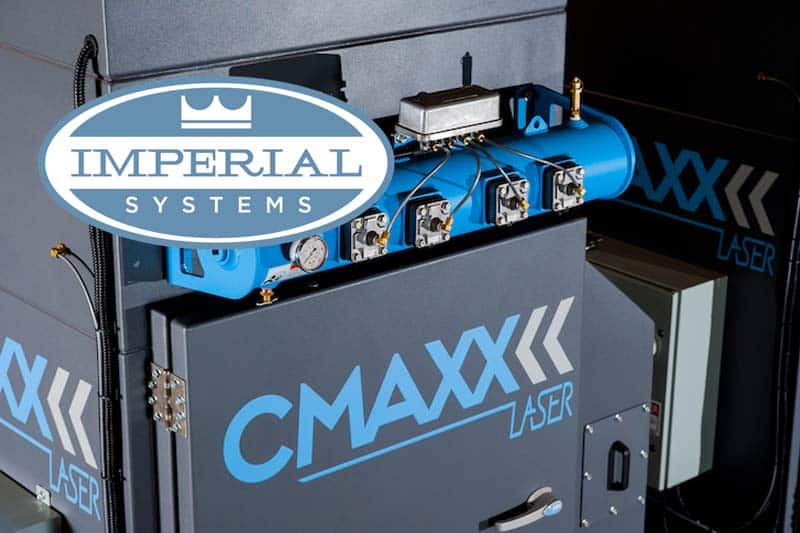
by Imperial Systems | Feb 8, 2017 | Uncategorized
Lung disease from inhaling sand or rock dust is one of the oldest occupational hazards. The health risks of silica were identified as early as 1700. Silicosis, the incurable lung disease caused by inhaling silica dust, causes hundreds of deaths every year. Other health effects also include liver and immune system diseases. OSHA concluded that the current silica exposure limits were too high after studying the research. So, they needed to set a new silica exposure limit to protect workers.
Some silica exposure still comes from well-known occupations like stone cutting, mining, and drilling. Abrasive blasting with sand is especially dangerous. However, newer industries have created new sources of exposure. One example of this is hydraulic fracturing, or fracking, for oil and gas. Another example is the popularity of natural and manufactured stone countertops. All of these industries must achieve compliance with OSHA’s new silica law to keep workers safe.
How does silica hurt you?
Silica is one of the most common elements on earth. It makes up a major part of sand, rocks, and all products made from those things, like concrete.
The major health risks of silica happen when one inhales it into the lungs. Silica that is small enough to be inhaled is called “respirable crystalline silica” in formal OSHA language. Drilling or grinding creates fine silica dust, and sand is already a form of crystalline silica that can become airborne, especially during blasting or fracking operations.
Developing Silicosis
Silicosis is a disease that causes the biggest concern with silica. The American Lung Association warns about the permanent lung damage that happens with this disease.
Silicosis happens when silica dust damages the lining of the tiny air sacs in the lungs. This injury causes scarring and makes it harder for the air sacs to get oxygen into your body.
Acute silicosis can occur within weeks or months of very heavy exposure. In this case, the lungs respond to the injury by swelling up and filling with fluid. This can be very dangerous and make it very hard to breathe.
Chronic silicosis is the most common kind. The swelling and scarring of the lungs happen over years. Symptoms include coughing, chest pain, and sometimes tiredness and weight loss. The scarring can progress to a condition called progressive massive fibrosis, where the lungs become stiff and full of scar tissue. When the disease is severe, people may need oxygen support to be able to breathe. Silicosis can cause death.
The health risks of silica include other deadly conditions. Silica is a known carcinogen, meaning it causes lung cancer. It also makes you more likely to get lung diseases like emphysema, tuberculosis or bronchitis. NIOSH, the research arm of OSHA, reviewed all of the studies on silica exposure and wrote a detailed report on it.
How can the health risks of silica be controlled?
OSHA recommends that the first line of defense is replacing silica with safer materials. This isn’t always an option. Replacement products may be expensive or just not available. Silica is common, cheap, and stable, which makes it hard to replace.
The second line of defense, and usually the best option when possible, is using engineering controls. A popular engineering control is a dust collector. A dust collection system removes silica dust from the work area and safely captures it for reuse or disposal. Just venting the dust out of the work area means that it ends up somewhere else, and that can be a problem.
A dust collector filters silica dust from the air. The dust drops into a hopper for safe handling. The air can be returned to the work area. The system can clean a large area and keep an entire facility free of silica dust.
Dust collectors can also be installed on equipment such as sand trucks or conveyors to control silica dust when moving sand around. This is important in fracking applications.
In situations like construction or drilling, the best solution may be a NIOSH-certified respirator. Because respirators are uncomfortable and difficult to fit correctly, they are not the ideal solution. Sometimes, though, they are the only option. If you must wear a respirator to protect you from the health risks of silica, make sure it is NIOSH-certified for the job you’re doing, and make sure it fits correctly.
Read more
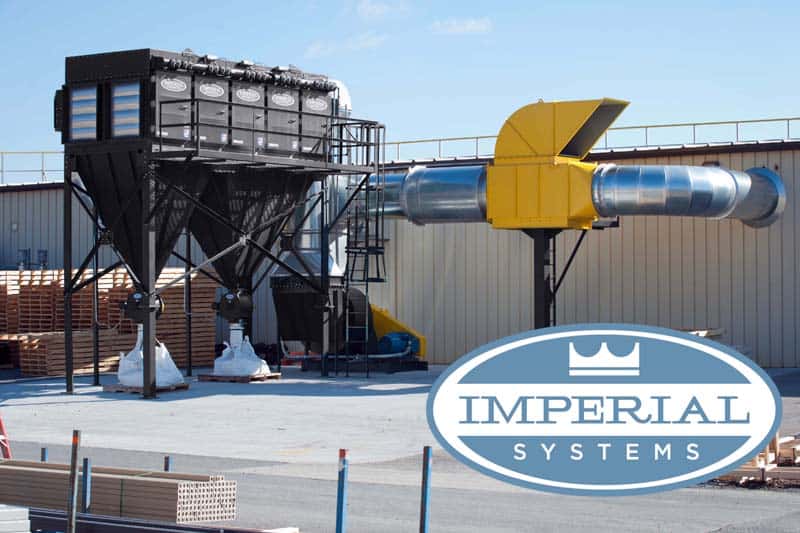
by Imperial Systems | Jan 19, 2017 | Uncategorized
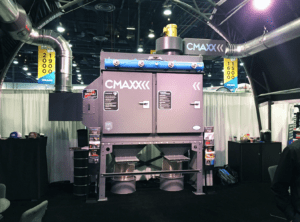
The CMAXX for managing weld smoke on display at FABTECH 2017. This install is showing an ambient filtration method.
Managing weld smoke risks means dealing with very small particle sizes, toxic metals, and the combustibility of metal dust. Weld smoke is different from other types of dust, requiring a system design to deal with it. A CMAXX dust and fume collection system will meet any metalworking or weld smoke control needs.
Managing Weld Smoke for Health
One of the risks of weld smoke is hexavalent chromium. That’s because this compound can cause skin sores and lung damage, and cancer of the lungs, kidneys, and other organs. Many metals have chromium alloy to make them corrosion resistant.
Most of the particles in welding fumes come from the welding wire, but some of them come from the welded material. Some of them can cause allergic reactions and an immune response called “metal fume fever.” Lead and manganese can damage the brain. Further, others like hexavalent chromium and nickel, are carcinogens and can increase your risk of cancer.
Welding fume particles are extremely small. Most are smaller than one micron. This means they are small enough to get inside human cells and cause damage. This also means that welding fumes are lighter than air, especially when heated. So, a system for managing weld smoke and collecting these fumes requires a design to handle very small particles.
Managing Fire And Explosion Risk
Welding produces metal dust and gases that may be combustible. Some metals, such as aluminum, are very explosive in dust form. Almost all metal dusts have the potential to explode. Handling welding fumes means using appropriate fire suppression and prevention measures.
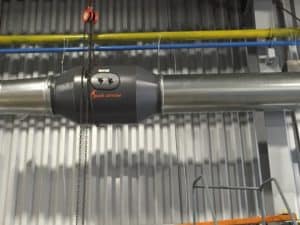
Installation of a Spark Arrestor (or Spark Trap) in a maintenance weld shop.
Suppressing sparks to keep them from getting into the collector can help prevent explosions from welding smoke dust. Spark Arrestors are certainly important in keeping most sparks from getting to the collector. Also, an explosion isolation valve can prevent a fire from traveling back through the ductwork. Chemical control systems can suppress or extinguish a flame, but only certain chemicals are approved for fires involving metal dust.
Filters can also be important for fire suppression in a welding smoke system. Filters with a fire-retardant coating will resist burning and help control deflagration. Some collector designs have filters that help isolate an explosion and keep it from causing damage inside the workplace. DeltaMAXX filters with a fire-retardant coating will prevent a fire from occurring inside a dust collector.
Handling Weld Smoke
Figuring out what type of fume extraction system to use in your facility is an important decision for managing the risks from weld smoke. Our systems engineers will consult with you to help you determine the best way to manage your weld smoke risk.
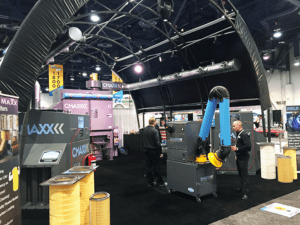
Shadow portable weld fume collector at FABTECH 2017. Designed for managing weld smoke
If there are not very many welders and they don’t always work at the same place, portable collectors can be a solution. They can be useful for handling point-of-source capture. An ambient system design moves a volume of air out of a large area and through filters.
For managing weld smoke, portable collectors are easy to move around, but they are not as powerful as larger collectors. Central collectors are the most efficient for large areas, but if they are inside they take up floor space. We recommend locating the collector outside for safe explosion venting.
One of the biggest advantages of an ambient system that recirculates the air back into the facility is energy cost savings. When heated or air-conditioned air is vented outside, the energy used is lost. Many businesses find that a fume collection system can pay for itself within two years with the money saved in energy costs.
CMAXX dust and fume collectors have proven themselves in the welding and metalworking fields. Our newest product, the SHADOW portable collector, gives you even more options for managing weld smoke. DeltaMAXX nanofiber filters are the best available material for capturing metal fumes. At Imperial Systems Inc., we are committed to helping you control your weld smoke risks.
(as seen in The Fabricator Magazine)
Read more
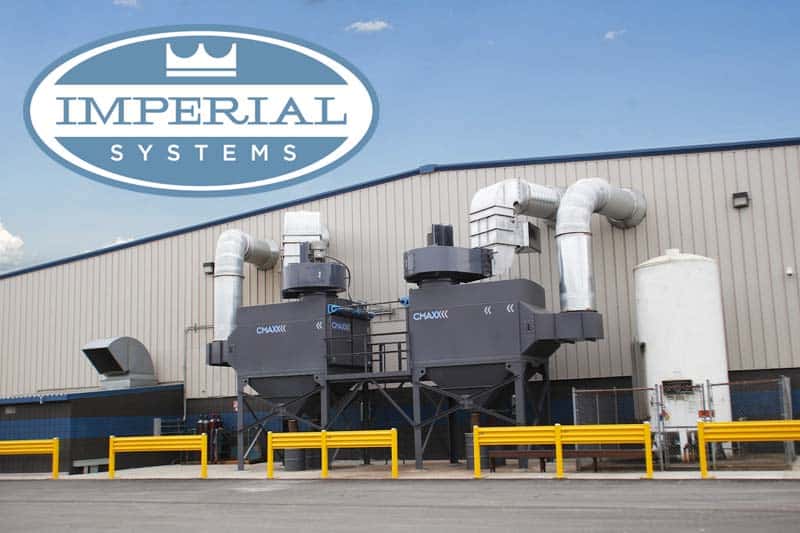
by Imperial Systems | Jan 12, 2017 | Uncategorized
You know we manufacture our DeltaMAXX™ filters for our own dust collectors. If you’re looking for replacement dust collector filters and you own a collector made by another manufacturer, you should know that some of our top-selling filters are replacements for the other guys’ OEM filters!
Why People Buy DeltaMAXX Replacement Dust Collector Filters Instead of OEM
Basically, a cartridge filter is a cartridge filter. There’s nothing magical or special that makes one company’s filters superior. As with any product, there are different levels of quality. Choosing a manufacturer who makes a quality product instead of junk is always going to be important.
So let’s assume that most of the big-name OEM companies, like Donaldson Torit, Robovent, and Camfil Farr, make a quality filter. You own one of their collectors, and you’re putting their filters in it. Why would you think about switching?
Here are three good reasons:
- Isn’t that always the best reason? Our replacement dust collector filters are guaranteed to perform as well as, or better than, your OEM filters. And almost everyone who comes to us for replacements finds that our prices are better.
- NO GIMMICKS. We don’t play games with filter gimmicks. Drug companies that keep releasing “new and improved” versions of the same medication so they can keep their patents. Some OEMs try to do the same thing. Weird new shapes, cool-looking inserts, special new gaskets. Do you really need any of them? Probably not.
- Getting a good price doesn’t help if the filters aren’t as good. That’s why our guarantee promises you that while we’re beating your OEM’s price, you’re not sacrificing filter quality.
If you’re looking for replacement dust collector filters, it’s worth your time to get a quote from us. We make replacement dust collector filters for almost all manufacturers, including:
- Donaldson Torit
- Camfil Farr
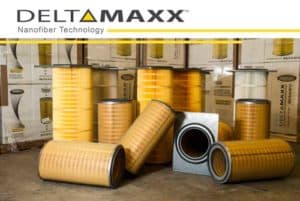
Filters come in many shapes and sizes. These are a few of those replacement options
- Robovent
- Clean Air America
- TDC
- Lincoln Electric
- Mac
- Chemco
- Nordson
- Environmental
- Micro-Air
- Many others… just call us and ask!
How to Get a Quote On Replacement Filters
It’s easy to get a quote from us on filters made by most other manufacturers. Our specialized cross-matching system will match the part number you usually order with the right filter.
Don’t have a part number? We can still help you. Call us or send an email, and we’ll talk you through the measurements we need to get you a match.
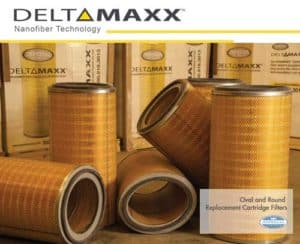
Replace dust collector filters for Donaldson Torit round and oval cartridge filters
Have filter problems?
Sometimes the wrong kind of filter won’t work for some applications. For example, if you have moisture damaging your filters, you may need a spunbond material that can resist water. If you’ve experienced a fire in your dust collector, it’s definitely worth investing in some fire-retardant filters. If your regular 80/20 filters are getting plugged up with dust after only a few months, you might want to try a nanofiber filter that will collect smaller particles.
Whatever problem you might be having, we can help. Talk to a filter expert right now on Live Chat (during normal business hours) or fill out a contact form!
Read more

by Imperial Systems | Jan 4, 2017 | Uncategorized
We get a lot of questions about fumes from welding or laser and plasma cutting. People are aware that there are health risks. Further, many of them have heard about hexavalent chromium. It is a good reason to be careful when working around plasma fumes, but it’s not the only reason. “Hex chrome” is just one of the hazards involved.
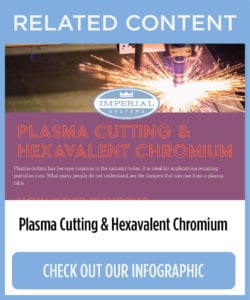 What is Hex Chrome?
What is Hex Chrome?
You may have heard that hexavalent chromium, often called hex chrome, is mainly a problem for people working with stainless steel. Stainless steel does contain much more chromium than other types of steel. However, many metals are either alloyed or electroplated with chromium to protect them from corrosion.
Metals don’t usually contain hexavalent chromium. Instead, when the metal is heated to a high temperature, the chromium reacts with oxygen to form compounds. Specifically, hexavalent chromium is one of them. This compound, when inhaled as in plasma fumes, is known to increase the risk of lung cancer and other cancers. When in contact with the skin, it can cause irritation and skin sores.
What are the other Risks?
Other common metals that people may encounter in welding smoke or plasma cutting fumes include iron, copper, zinc, nickel, manganese, aluminum, tin, beryllium, cadmium, lead, and titanium. Most of these can certainly irritate your eyes, nose, and throat. Others, like cadmium, are cancer-causing agents. Some, such as lead and manganese, damage your nerves and brain. Beryllium can be even more hazardous and cause fatal lung disease. Components of metal fumes can also cause kidney damage.
No plasma fume or smoke from cutting or welding is safe to inhale. Even iron, which is not toxic, can accumulate in the lungs and cause long-term damage. The lungs are very sensitive to damage, and welding or cutting produces metal particles small enough to be easily inhaled. Whether it’s referred to as fumes, smoke, gases, or dust, it’s an airborne cloud of tiny particles that can make their way deep into your lungs. They can be as small as 0.3 microns, which is 250 times smaller than human hair and about 15 times smaller than a red blood cell.
Other metals, including nickel, zinc, and copper, cause “metal fume fever”, a flu-like response to chemicals released by damaged cells in the lungs. The symptoms resemble the flu, with headaches, fever and chills, muscle aches, and coughing. Welding is the occupation most likely to result in this condition, but plasma fumes and laser cutting fumes can also cause it.
It’s often reported that drinking milk can help prevent this condition, and many people swear by it. Either way, it doesn’t prevent the long-term lung damage that occurs when metal dust is inhaled. Drinking milk won’t hurt, but avoiding the toxic effects of exposure altogether is a safer bet.
What can I do about the welding and plasma fumes?
Fortunately, there’s no reason to put your health in danger to do your job. OSHA regulations set safe exposure levels for almost all plasma and other metal fumes. They recommend several methods to prevent over-exposure. A CMAXX™ dust and fume collection system (CMAXX Dust and Fume Collector) is efficient and effective. It can reduce or eliminate the need for uncomfortable and often improperly used respirators. Our team can advise you on the best ways to keep people safe when they’re welding or working around laser or plasma cutting.
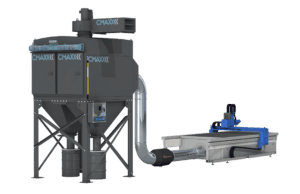
We hope this information is helpful for the people who have asked us questions in the past about welding and plasma fumes and who come to us with questions in the future!
If you need more information, please click the CHAT NOW box during normal business hours for immediate help. You can also contact us to request more information.
Reference Articles
- Facts about Plasma Cutting and Plasma Technology. Penrose: BOC, n.d. BOC. Web.
- Gibson, Hugh. “Plasma Cutting Using A Hand Held Machine.” Plasma Cutting Fumes Danger! N.p., 19 Mar. 2013. Web. 08 Jan. 2014.
- Plasma Cutter Safety Guide | Longevity-inc.com.” Plasma Cutter Safety Guide. Longevity-inc.com, n.d. Web. 08 Jan. 2014.
- Sheahan, Kyra. “OSHA Safety Standard for Plasma Dust.” EHow. Demand Media, 28 Nov. 2010. Web. 08 Jan. 2014.
- Stone, Joe. “OSHA Safety Standard for Plasma Dust and Fumes.” Work. Demand Media, n.d. Web. 08 Jan. 2014.
- Zlotnicki, Steve. “Does Plasma Cutting Produce Hex Chrome?” Plasma Arc Cutting of Stainless Steel Will Produce Hexavalent Chromium. Esab-cutting, 12 May 2013. Web. 08 Jan. 2014.
Read more

by Imperial Systems | Nov 17, 2016 | Uncategorized
This November, with best wishes and some sadness, we celebrate the retirement of a man who didn’t just work here at Imperial Systems: Bruce Johnson helped to build it.
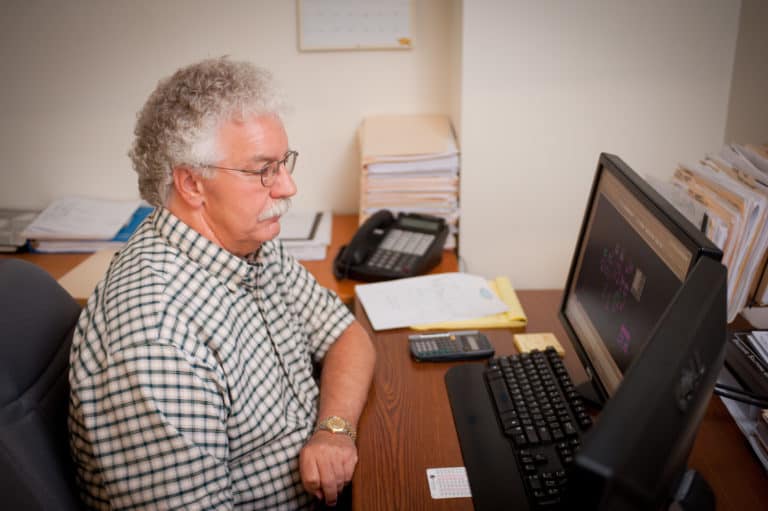
When you ask Bruce to tell you about his accomplishments, he seems a little confused as to why you’d even ask him. He is quiet and humble, and I’m not sure he realizes how deeply he is respected or how deeply he will be missed.
Bruce came to Imperial Systems in January of 2008. On his first day, he was helping design a ductwork system. There were no offices, just a shop with dividers, and every project was a team project. These were early days for Imperial Systems as a company stepping into larger projects and new industries, and Bruce will tell you, with a smile, “It was definitely a team effort. We were all in it together.” Whether it was Jeremiah doing some welding or Joe Moore programming the plasma table or Charlie bringing his vast experience as a draftsman, everyone took whatever role was necessary to move forward.
It was nice to get offices, Bruce says, because then the engineers didn’t have to yell at each other. From small local jobs, he has moved to working on bigger systems, bigger and more elaborate ductwork, and new industries, like coal processing, grain, rubber, and wood dust. Bruce particularly remembers the Methuen project. “There were multiple floors in the building, really complex ductwork. It was a really great project to work on. Great learning experience.”
When you listen to Bruce talk about his time at Imperial Systems, two things stand out. One is his commitment to and love of learning: “If you don’t learn something new every day here, you must have been sleeping.” The other is a powerful sense of teamwork and sharing accomplishments with others. “We complement and balance each other,” he says. “As time went on we became more and more of a team. We depended on each other.” Bruce talks about his time at Imperial Systems as a time of team building, learning to build on each person’s skills, teaching each other, and becoming more skilled and more capable together than they could ever be on their own.
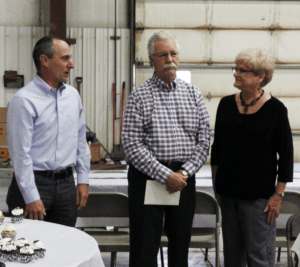

Bruce doesn’t talk about his own accomplishments as much as he talks, with great pride and affection, about how he and those around him grew together and built something great. He talks about the problems they solved, jobs that just kept growing, jobs that turned out to be more complicated than expected. He talks about how the company constantly moves forward, but what he doesn’t talk about is how necessary he was in making that happen. In his small, meticulously kept records, he counts 131 jobs he has worked on since 2013.
Jeremiah Wann doesn’t hold back when he talks about what Bruce has meant to the company and to him personally:
“Guys like Bruce are truly a dying breed. Good work ethic, pride in quality and workmanship today is really hard to come by. I have mixed feelings about his retirement. There is a part of me that wants to celebrate with him over his retirement but there is a huge part of me that wishes we could keep him forever. It’s a real life lesson for me in that, we have to train not only in skill but in work ethic and principles. Bruce has been one of my best all-time team members and I am really going to miss him. My biggest fear is that it’s going to be impossible to completely replace him.”
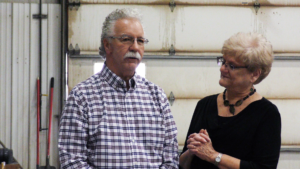
No matter how humble he is or how much credit he gives to those around him, Bruce has been a critical part of making Imperial Systems what it is and set an amazing example for all those who will take up his work after him. His work ethic and his willingness to celebrate the achievements of others makes Bruce a truly special person and he will be deeply missed.
All of us at Imperial Systems wish Bruce a wonderful, happy retirement. It is certainly earned and well-deserved.
Read more













